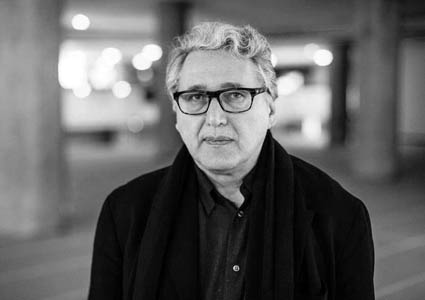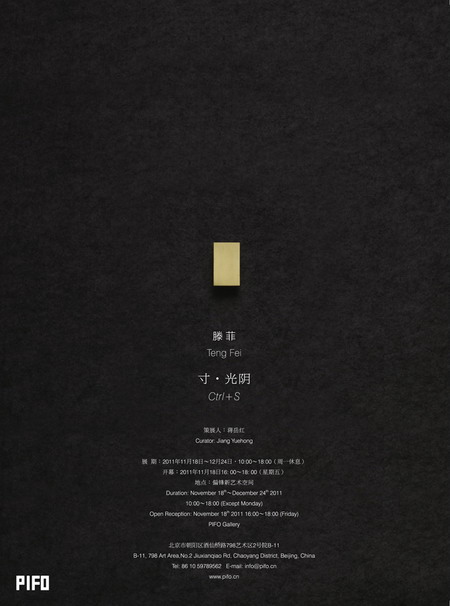
展览名称:寸·光阴——滕菲2011作品展
艺 术 家:滕菲
策 展 人:蒋岳红
展览时间:2011年11月18日~12月24日(周一休息)
开幕时间:2011年11月18日16: 00~18: 00(星期五)
展览地点:偏锋新艺术空间 - 北京市朝阳区酒仙桥路798艺术区2号院B-11
已经有那么一阵子了,每每都习惯了在匆匆忙忙中慨叹时不我待,似乎任何的一次有关逝者如斯的伫留和揣摩都会是另一个奢望。偏偏,是会有这样的物件——关乎生命的体悟、关乎岁月的记忆、关乎光阴的荏苒——那些我们无暇顾念的瞬间,经由艺术家滕菲的清心撷取和静思打造,存放在这一个又一个的物件里。
素有被公认为“中国艺术首饰开荒者”和“中国概念首饰第一人”之实名的艺术家滕菲,在为我们定义这些物件,让我们体会到它们作为首饰的“新”意时,也将她介入当代首饰实践的经验纳入到了她对自身所处当代艺术境况的反复思量中——当代如何首饰?这里的首饰和滕菲的艺术实践有关,这里的当代与你我的生存经验都相关。
……它们在那里,绽放着,兀自轻言慢语地诉说着,招引着我们回味,驻足,打量,禁不住想去碰触,去抚摸,忍不住想拿了来,珍藏在指间、胸前,细细地时时端详,时时聆听,分享着一份还需要通过感受你的体温、你的故事来滋养的温润——它在你隐秘的内心时空里弥漫着,散发出来,成就着举手投足间那个最淡定、最从容,也最真切的你自己……由不得,你会叹服于这些物件有别于“传家宝”式首饰的十足个性和艺术作品的特质。
偏锋新艺术空间前瞻性地在2011年11月18日——12月24日推出艺术家滕菲名为《寸•光阴 》的作品展。“寸”是一个量词,是一个形容词,还是一个动词。偏锋希冀着你在遭遇滕菲别样的当代艺术实践时,也能够存留住滕菲由此生发出来的,磨砺你我内心的感动。
With the constant passing of time, we become accustomed to the way time flies. The fleeting moments of our existence—the present, the past, the future—become lost in the clutter of daily life, but through artist Teng Fei’s clear emotions and still thoughts, they are caught in her creations.
Teng Fei has long been thought of as the one who “opened up” Chinese art jewelry, and China’s “first Conceptual Jewelry artist”. She has given us a definition for jewelry’s “new” meaning, channeling her experiences with contemporary jewelry into contemplation on her own place in contemporary art—what is contemporary art as adornment? Here, jewelry and Teng Fei’s art practices are intertwined; here, contemporary art and everybody’s life experiences are interrelated.
They are there, blossoming, still murmuring to us, making us stop, reflect, reckon; we can’t help ourselves wanting to touch them, stroke them; we can’t restrain from wanting to pick them up, collect them on our fingers, hold them in our chests; carefully scrutinizing them, listening to them, sharing the gentleness that through the heat of our bodies, through our stories, will be nourished—it is saturating the space and time of our secret hearts, effortlessly becoming our mildest, calmest and most vivid selves. Facing Teng Fei’s work, we must gasp at the differences between “family heirlooms” andthese things – the characteristics of their pure individualism and artistry.
PIFO Gallery will present Teng Fei’s Ctrl+S from November 18, 2011, to December 24, 2011. PIFO prospectively hopes that Teng Fei’s unique art practices will lodge within and move your innermost heart.

滕菲 穿越天梯 鹿角、有机玻璃、心电导联线、电极片、晶石 H280cm 2011
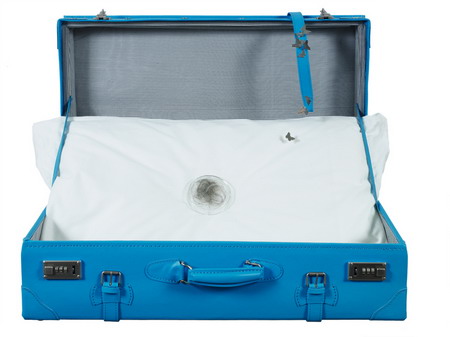
23 追到天堂 头发、皮箱、培养皿、枕头、银 40×24×68cm 201_02
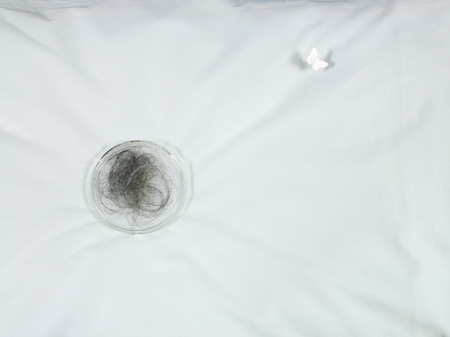
24 追到天堂 头发、皮箱、培养皿、枕头、银 40×24×68cm 201_03
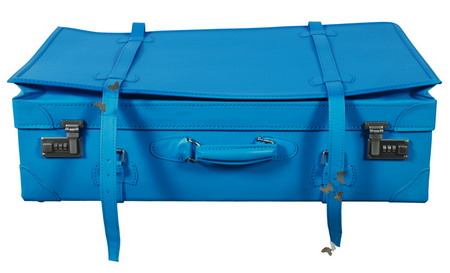
25 追到天堂 头发、皮箱、培养皿、枕头、银 40×24×68cm 2011_01

4 滕菲 辛卯年 银 53×25cm 2011_02

15 滕菲 一寸光阴 玉2.4×0.2×3.75cm 2011_01
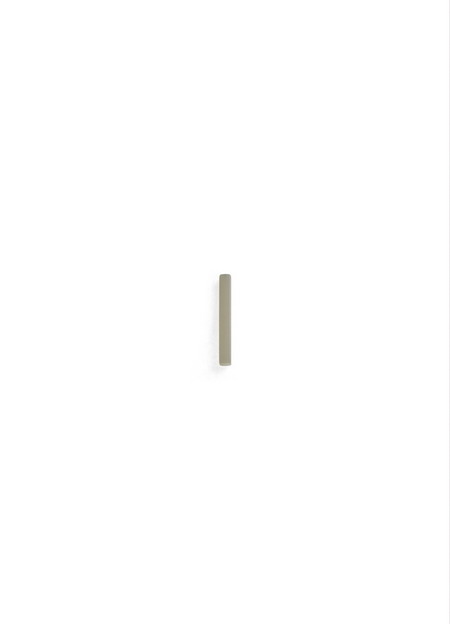
16 滕菲 一寸光阴 玉8.1×0.2×1.1cm 2011_02
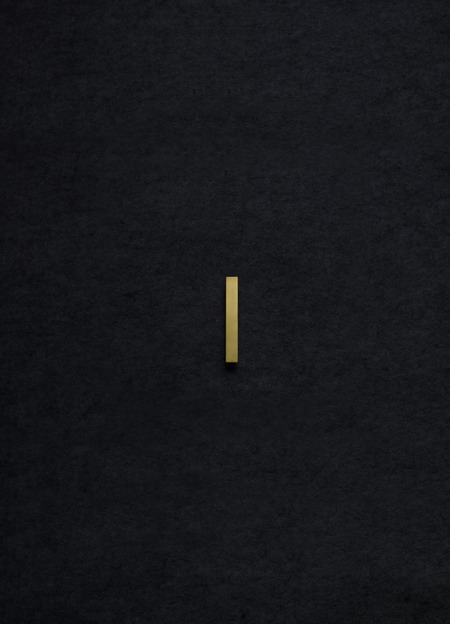
17 滕菲 一寸光阴 金 8.1×0.2×1.1cm 2011_02
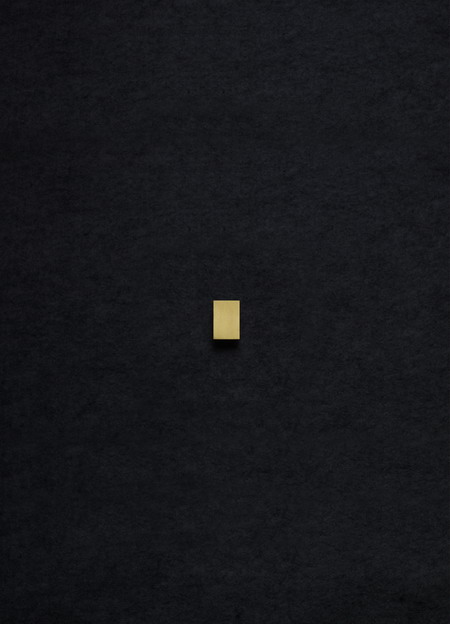
18 滕菲 一寸光阴 金 2.4×0.2×3.75cm 2011_01
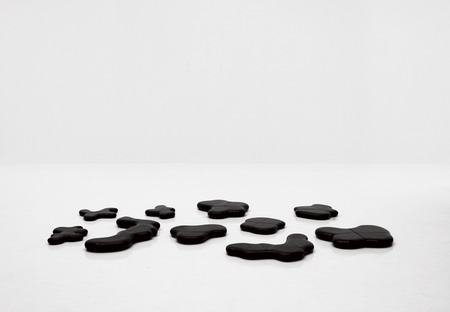
1 滕菲 碎玉 花岗岩 直径120 2011_01

2 滕菲 碎玉 花岗岩 直径120 2011_02

6 滕菲 浮珠 银、珍珠 直径3-4cm 2009

14 滕菲 国礼系列_飞花摘叶 珍珠、银、戈壁石 直径6-8cm 2010-2011_04
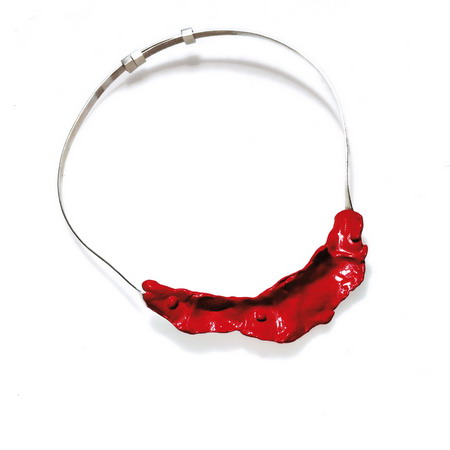
3 滕菲 那个夏天 银、漆 直径10cm 2007_01
当代如何首饰——以滕菲的艺术实践为例
文/蒋岳红
总是因为太过执迷于一种为艺术家的实践寻找语境和上下文关系的惯性和逻辑,才会在遭遇滕菲沉浸其间的诸多艺术实践时,怀揣了怦然心动之余却也有着张口结舌的失语之感:从木刻水印作品的朴素率真到装置作品的睿智敏感再到首饰作品的融通洒脱,滕菲都“玩”得兴致盎然,刻意又得意地模糊了任何想要将她和她钟情的艺术实践限制在既定坐标里来讨论的企图。
于是,我们也只有在坦然承认这其间透露出来的不确定性正是当代艺术实践自身不可回避的内部问题时,我们才会对滕菲个人找不到任何参照范本的艺术实践格外珍视。因为尚未进入历史书写、尝试定义自身还一直未果的当代首饰 的杂糅混血,暗合着当代艺术面目隐晦的特质。更因为滕菲的艺术实践提供的不仅仅只是经验,还是当代艺术的一种选择。
始于1960s的当代艺术从抽象表现进入到极简、概念、行为和女性主义等等多种艺术实践形式并存的时期,当代首饰在材料、技艺、形式、功能和表达上不间断的种种置疑和衍展,以及在身体政治和物质文化领域内引发的反思、清理和讨论,与其说是受到了当代艺术的影响,不如说它本身就是当代艺术的一个组成部分,同样在为各种艺术实践提供着舞台。滕菲在这个舞台上有备而来的现身和一以贯之的全情投入,演绎着她个人倾心表达的艺术课题,也提示出当代艺术境遇中关乎材料、形式和表达的种种可能。在关乎滕菲艺术作品种种意味深长的解读诱惑面前,我选择驻留在它们是如何生成的层面上。
滕菲对于材质本身有着由来已久的关注和敏感,从花瓣、蚕丝、马鬃开始。十余年之后在《对话与独白》(2004)里满是手痕的银有着肆意、粗砺而克制的生命力,成全着自身的独白,也主导着与珍珠和宝石之间对话的进行。在《雨季》(2005)里光纤一般的银丝托出的是剔透的彩色琉璃。这其中她对于材料质感和组合的把控透射出来的是一种经过涤荡之后的信手天成,是不漏痕迹的暗藏心机。如果说这两组作品对于同一材料视觉呈现上的区隔有基于性别差异的考量,那么《40岁日记》(2003)以及新近装置作品《追到天堂》(2011)里对于头发的收集、组合和仪式化得处理,则明显地带出艺术行为的意味和物质文化视野中对于纪念物的关注。显然,一再追究对材料质感视觉呈现的各种可能同样也是当代艺术试图在物质语言层面上拓展的出口之一。
滕菲的《朵•颐》(2007)系列中,有令我个人感觉极为惊艳的《胎记》、《那个夏天》、《谜》和《心悸》……首先是作品形态本身的触目感,其次是作品展示的叙事性,再则就是艺术家在这其中采用的工作方式所给出的定义个性化首饰的某种可能:作品形态来自于完全个人独有的身体取样。滕菲以自身为对象,揭示出如何将个人身体记忆的隐秘象征以视觉化的物质存在转译成个人如同指纹般的公开符号。在凸显自我存在的同时也传递出自我与外界的关联,在肯定自我的同时也在谋求外界对于个体的认定。这一系列作品中触及到关乎身体政治的指涉也恰恰是当代艺术染指颇深的一个视阈。
然而,滕菲的天性和她对于艺术的悟性都令她不太可能策略性地固守在某一材质的视觉化呈现或某一形态的重复获取上。一旦有了顺理成章的可能,她都会开始自觉地警醒。她自己常常会说到,她的创作是从观念的表达出发的,只要是契合她的观念和表达的,任何材料任何方式都有可能。正如她在《生命》(2008)和新作《寸•光阴》(2011)中,遵循自设的规则来切割已有的一个形态,或是生成和组合出一个新的形态。这些写意的几何形态一如既往地保有着材质、加工、表达上的浑然、干净和利落。在情感与理智彼此关联的灰色地带作着细致和微妙的拿捏,观念的表达变得更为鲜明和集中的同时,任何可能分散注意力的造型元素似乎都被不动声色地放弃了。滕菲在造型中轻松、活泼和随性的一些元素有意识地被分拣了出去,却加持了内敛、沉静和含蓄的部分。在自设的规则里则以“为难”自己来成全了能够让作品有效衍生的互动行为。滕菲作品创作的全过程提示出了艺术实践的核心不是一个既定的结果,而是开放的方式。
在这些作品里,我们作为观众抑或是作为参与者都会对分离与共享、同质与差异、瞬间与消逝、具体与抽象、偶发与限制有某种悖论式的体悟。作品的最终呈现需要艺术家本人之外的另一个或另一些人的主动参与来实现。这是滕菲新近的一系列艺术实践中所凸现出来的一个方式。互动和对话一方面是滕菲探讨首饰伦理变迁的方式:首饰不再只是个人的独享,它还是人与人之间关联的体现,另一方面也是有别于现代艺术宣言式表达的当代艺术所特别倚重的行动上的呼应。
终究,我们会了然到首饰对于滕菲的艺术实践从来都没有作为一个限定和主题,而是作为了她艺术实践的一个策略和方式。由此,我们也会更倾向于将滕菲介入当代首饰实践的经验看作是她对自身所处的当代艺术境况反复思量之后的一个选择——当代如何首饰?这里的首饰和艺术实践有关,这里的当代与生存经验相关。
2011-10
JEWELLERY AS A CONTEMPORARARY ART PRACTICE
Jiang Yuehong
Our obsession with finding a context for and relationship between the flow and logic in an artist’s practices leaves us at a loss for words yet eager when we encounter Teng Fei’s variety of art practices: from the simplicity and sincerity of woodprint pieces to wise and sensitive installations, and finally to freely flowing and unencumbered jewelry pieces, Teng Fei exuberantly ‘plays’, meticulously and proudly confusing any attempt to discuss and categorize her and her beloved art practices.
Thus, only when we finally can admit that the uncertainty that comes out of this is actually an integral part of contemporary art practices, will we see that there is absolutely no pattern with which to compare Teng Fei’s art. Because it has yet to be characterized, we try to define without effect the characteristics of contemporary jewelry, as they mix and become entangled with contemporary art’s hybridity and obscurity. Even more so because Teng Fei’s art practices provide not only an experience, but a kind of choice for contemporary art.
Starting in the 1960’s, contemporary art moved from Abstract Expressionism into minimalism, conceptualism, performance and feminism realms: a co-existence of multiple forms and different directions of art practice. Contemporary jewelry, in every kinds of question and extension continously show in its materials, techniques, forms, function and ideas, and in the reflection, clarification and discussion it aroused in body politics and the realm of the culture of objects, was not so much influenced by contemporary art as truly one part of contemporary art, providing a stage for different kinds of art practices. Teng Fei has begun to shine on this stage and consistently invests her full range of concerns, baring her fierce love of her art, and unveiling the unlimited possibilities of materials, form and expression within the current state of contemporary art. Facing the profound interpretation and meaning of Teng Fei’s works, I would like to show how it is what it is.
Teng Fei’s attention and sensitivity towards re-valuation of material qualities, using flower petals, silk and horse hair, has ancient origins. Looking back at her works of the last decade, Dialog& Monolog (2004) is full hand-wrought silver with a willful, coarse, and self-restrained vitality, completing its own monologue, and managing a dialogue with its pearls and stones. In Rainy Season (2005), the light-like silver-thread support transparent colored glazes. The control she wields over her textures and combinations is an inherent and mature skill, the consciousness of her actions unrevealed. If we regard the discrepancies in the visual appearance of a single material in these two series as due to a consideration based on gender difference in the pieces, then Diaries of 40 (2003) and the recent installation Nirvana(2011), clearly show, in their collection of hair and its placement and ceremony, the process and implications of production, and in our material culture’s field of vision, attention to commemoration. It appears that repeated seeking of the various possibilities for materials’ textured visual appearance and meanings are in the same way an outlet for contemporary art’s attempt at expansion in the language of objects.
Teng Fei’s Birthmark, That Summer, A Riddle and Palpitation from the Palate•Pleased series (2007) are stunning in the eye-catching form, the narrative nature, the method used to give a definitive uniqueness to the jewelry’s possibility: the form come from the absolute individualism of pieces of one’s body. Teng Fei uses her own body as her subject, showing how the hidden marks on a body’s memory can transform through visualization into a public sign such as an individual’s fingerprint. As the existence of the self is magnified, it transmits the affiliation between the self and the outside world; as the self is confirmed, it strains for the belief of the world in individualism. This series penetrates the body’s politics and is a window into new directions in contemporary art.
However, Teng Fei’s nature and relationship to art make her unable to consciously cling to a defined appearance of a certain material or the reappearance of a certain kind of shape. As soon as she has a glimpse of the outcome of a new piece, she will begin to self-consciously be alert. She often says that her creations start from the expression of concepts, and as long as it agrees with her concept, any kind of material or method has possibility. In her Life (2008), and new pieces Ctrl+S(2011), she follows her rules of self-design to cut apart an existing form, or produces and combines to create a new form. This relaxed attitude helps to maintain the quality of the material, the craftsmanship, the expression, the cleanliness and orderliness. In the mixed area between emotion and reason, meticulous and subtle choices are made, and as the expression of concepts becomes more distinct and focused, all elements that might distract attention are calmly discarded. When Teng Fei is molding a piece, the relaxed, excitable and malleable elements are consciously plucked out, while the restrained, peaceful and unspoken components are retained. Within her rules of self-design, she makes it “an obstacle” for herself in order to accomplish pieces that can effectively cause interaction with the viewers. The complete process of Teng Fei’s works show that the core of art practice is not the outcome proposed, but the method provided for unpredictable effect.
In these works, we as the audience, or even we as participants, can experience the paradox between the private and public, homogenous and different, momentary and lasting, concrete and abstract, spontaneous and limited. The final expression of the work needs other people to initiate participation in order to be realized. This is a method that has emerged in Teng Fei’s newest series. One side of interaction and conversation is how Teng Fei investigates the changes in the ethics of jewelry: jewelry is no longer an individual adornment, it is the embodiment of a connection between people; the other side is the response in action that contemporary art especially counts on and thus differentiate itself from the modern art who values manifesto a lot.
In the end, it is evident to us that jewelry has never been a restricted objective within Teng Fei’s art practices, but rather a tactical means in her art practices. So, we can see Teng Fei’s experiences with contemporary jewelry as a choice made after contemplation on her own place in contemporary art—what is contemporary art as adornment? Here, jewelry and art practices are intertwined; here, contemporary art and life experiences are interrelated.
2011-10
细软中传来的生命大声
——滕菲首饰有感
文/吕胜中
【壹】
我看滕菲的首饰,静默无声的一枚枚不同质地的“作品”潜入心底,生出层层叠叠的惊奇。
在我的经验中:首饰,细致活脱的手艺,沉厚灰蒙的包浆,精光内敛的质地……它总是女子静而生动的装点、雍容华贵的标志。
滕菲说:中国首饰艺术的发展则一直停顿在历史与传统的影子里,尤其自明清以后,中国的首饰艺术没有得到它应有的发展和关注。在相关史料的记载中,我们获得的往往都是古代首饰的样式、佩带功能及其相关的工艺等内容,却看不到现代人对其承传与拓展的篇幅,至于对未来首饰艺术的研究与思考更是了无踪迹。
于是,滕菲就在这个断裂的荒凉现场艰难上路了。
“飞花摘叶 皆可送人”,这是她首先将首饰作为人类情感物化形式所提出的创作理念。花草无情人有情,醉翁之意不在酒,我相信,这曾经是生命最本原的情感表达方式,而首饰,真像造型艺术中的散文诗,以短章的形式,用轻灵而富于内涵的意象、简炼有韵律并且富于节奏的语言,自由抒发内心世界的文体,叙述表述者情感的意象。
意象是什么?意象就是浸透主观情感的物象,我们要把抽象的情感形象化,即物化的过程,只能用意象创造出意境。当“飞花摘叶”渗透进作者主观情感的意象,就已经不再是原来“顺手可得”的花花草草,因为那上面有了一份真心。
于是,滕菲的两个系列《对话与独白》、《雨季》基于这样的“采集”——那些并不娇娆争俏却倔强着的花瓣、蓓蕾,那些容易被人忽略的枝丫以及上面努出的苞芽,那些快要败落仍固执生机的绿叶以及滴落在上面瞬间即逝的水珠……它们自己在述说,滕菲自己在述说,滕菲和它们在述说——一个抒发情感的诗的意象在述说中酿造成为一个圆满的结果,套在他或她的指上或项间。
他或她听见了吗?
【贰】
首饰,自古以来是人珍爱的物件,或为标记群体意识的图腾,或为避除邪恶侵袭的护符,或为彰显人格层次的象征,或为寄托情感火花的存储……久而久之,它与生命相伴并难以割舍。在这里,物我、天人、情景且然无间,合为一体,了无余痕。
人类对物的积蓄与眷恋总是不可抑制,但达人会说:衣食之外,余为身外之物。乱世间,逃离走窜,一个包裹一只盒子就是一个家当,而在这经过缜密筛选的轻便“家当”中,细软者,精细而易于携带的贵重之物也。我想,这绝不仅仅是出于它们质料的贵重,因为舍弃这份浸染着生命质量的细软就等于舍弃了生命的全部。
滕菲也许早已从首饰的历史中读出了这一点,但她却不是接着历史的“话茬儿”做一个简单的注释,她开始直接从生命的旅途中寻觅值得珍惜的痕迹。她的《身体的寓言》、《心悸》、《日记》、《谜》将吸氧的橡皮管、心电图记录纸、磁共振脑电图以及脱落的头发作为素材,这些曾连接身心、维系生命的旅途遗物让滕菲珍爱并打造成为可佩戴在身的“细软”——让人们爱不释手的可以是金、是银、是玉、是珍珠、是钻石……但它必须与生命息息相关。
佩戴着这些与自己生命息息相关的物件,即使遇到人生旅途中的无常离乱,滕菲自会不动声色,仿佛怀揣着一颗经世不慌的定心丸。
【叁】
精神之中总有一部分是坚强,心灵之中总有一部分是细软。
滕菲是一个生于江南的女子,中国传统女性阴柔为美的准则从小渲染着她的性情,就如首饰那样酿造着心灵的细软。
细软的底线在哪里?在更多的时候,我们承载的内容总要有个限度,悲伤也罢,痛苦也罢,在到达极限之后,心灵开始缺氧,呼吸变艰难起来。这时候我们适合闭上眼睛,在冥冥之间找自己,在底线的层面边缘彳亍,或者叫做徘徊。
生命总要面对极限,人生之中更多的时候在寻找这个极限。
我们往往会将珍贵的东西隐藏完好,比如金银细软;我们往往会将柔软的部分遮蔽严密,比如情感细软。可隐藏并不代表就能万无一失,因为生命的责任与价值绝不仅仅是个体的自我,自我是天地之间生灵万物的一个小点儿,就像米芾笔下的点墨或修拉画布上的色斑。当她爱着生命的时候她也会爱着这个世界,并将自己珍贵的东西奉献出来。
这奉献往往伴随着巨大的痛疼。
滕菲的作品《那个夏天》让我看到她面对痛疼的泰然自若——身穿红衣的滕菲平静的闭上双眼,仰起头来,脖颈上一道虚拟的刀痕中渗出浓重的鲜血——看不到激烈的搏斗和挣扎,生死的较量却让每个观者触目惊心。
滕菲说,这灵感是来自于他剖腹产生下儿子的经历。
我说,她已然从母性奉献的苦痛中超越,她在血痕和痛中体验到真爱的力量如此光辉灿烂!
世界在她的面前,理想在她的面前,美的历程在她的面前——在面前,却遥远,举步艰,行进难,但滕菲有了对于自我生命价值的果敢的判断,就有了追求的信心与勇敢——一个阴柔女子已在血与火雕琢的“细软”中造就了心灵深处的刚强与稳健,从夏天漫步——秋天——冬天,直至春天,从她的心里奉献出一份份真诚的细软。
A Life Shouted Aloud from “细软xìruǎn ”
Text: Lv Shengzhong
I.
When I look at Teng Fei’s jewelry, the meticulously textured pieces steal silently into the bottom of my heart and inspire wonder.
Jewelry--the delicate craftwork, the exquisite textures--has always been a quiet but vibrant feminine adornment, a symbol of elegance and luxury.
Teng Fei says that the development of China’s jewelry craft has halted under the shadow of history and tradition. In the years especially since the end of the Qing Dynasty, Chinese jewelry has not gotten the attention or promotion it deserves. Historical records give us jewelry in the classical style, with its function of adornment as well as artistry, but in China today there is no step forward for the future of Chinese jewelry.
It is upon this fractured and desolate path that Teng Fei started her creative journey.
“Flowers and leaves bear one’s emotions as gifts to others”— this concept of how jewelry can become an objectification of people’s emotions is what she bases her creation upon. Flowers in themselves are devoid of emotion, but human emotion is conferred through the offering of flowers, as jewelry confers meaning through its beauty. Jewelry is a poem of figurative art, its agile and expressive imagery, cadence and rhythmic language an essay that exposes the inner world of the narrator’s emotional imagery.
What is “imagery”? It is an object totally soaked in our subjective impression; to give form to this abstract impression, we use imagery to create artistry. As the “gifts of emotions” are permeated by the artist’s emotional imagery, they will no longer be simple, emotionless flowers and leaves, because they have been imbued with true emotion.
We can see this imagery in two of Teng Fei’s series, Dialogue and Monologue ( 2004) and Rainy Season.(2005) Those plain yet challenging petals and buds; those easily overlooked twigs with those sprouts pushing upwards; those quickly dying green leaves that still long for life; those droplets of water that drip down and pass away…they are whispering, Teng Fei is explaining, they are all narrating together… a poem made of emotional images becomes a tangible piece of finery, worn upon a finger or around a neck.
Can you hear it?
II.
Jewelry has always been a cherished object or a totem to unite a community, a talisman to protect from evil or a symbol to distinguish layers of society, or a remembrance of the sparks of emotion… throughout time, jewelry has accompanied life, never to be wrought apart. Here, objects and self, celestial beings, come together as one.
A longing for objects has always insuppressible, but wise men would say: aside from clothing and food, all else is just worldly possessions. Fleeing from a world torn apart by chaos, the objects one is most likely to carry on their person are valuables. This is not only because the materials are precious--it is because giving up this reminder of the preciousness of life is like giving up life itself.
Perhaps Teng Fei has already noted these characteristics of jewelry, but she is not simply following a historical account. She delves directly into life’s journey looking for things worth cherishing. Her Allegory of the Body, Palpitation, Diaries of 40, and A Riddle turn artifical tubes, electrocardiograms, X-rays and hair into raw materials; these remnants of life that were once attached to the body, holding us together, are turned into “valuables” that can be worn as accessories. Cherished items might be gold, silver, jade, pearls, diamonds… but they must be closely bound with our lives.
Wearing these pieces of life, Teng Fei remains calm and collected, even while encountering obstacles along the road that will change her journey.
III.
In the spirit there resides a pocket of perseverance, and in the mind there resides a sense of life value.
Teng Fei was born in southern China, and a traditional Chinese feminine aesthetic has always influenced her nature, just like jewelry brews a spiritual fineness.
Where is the bottom line of life value? Whether it is sadness or pain, our emotions bear limited endurance, and once we’ve reached the line, our soult begins to gasp for air. In this moment we can only shut our eyes, locate ourselves in the blackness, and pace back and forth on the fringe of the line.
Life will always come face to face with limits, and we spend most of our lives looking for this place.
Silver and gold finery are hidden away to keep them intact; our delicate emotions are bundled up to protect their values. But these valuable things seep out despite our best efforts, because a mere individual cannot contain the immensity of life. The self is a tiny point in all the life between heaven and earth, like a drop of ink of Mi Fu, the ancient Chinese calligrapher, or a colored stain of Georges Seurat. When she embraces the fullness of life, she can offer up her valuables to the world.
This offering is tied to a deep hurt.
Teng Fei’s work That Summer (2007)shows her calm in the face of pain—eyes closed, head raised, on her neck a made-up thick line of fresh blood within trace of a knife—an intense hidden struggle, the fight between life and death.
Teng Fei says the inspiration for this piece is her memory of delivering her son by c-section.
I think that she has already moved past the suffering of a mother’s dedication, and in the blood and pain she has experienced the power of true love!
With the world in front of her, ideals in front of her, beauty in front of her—in front of her but also far, the steps difficult, progress hard--Teng Fei has faith in the value of self, seeks confidence and courage. An introverted woman who has created a steady and unyielding spirit in the “fineness” sculpted from blood and fire, she marches from summer—fall—winter--all the way to spring, offering us from her depths her special “细软xìruǎn” --- valuables in jewelry and soul. .
“你没有界线”
——尹吉男&滕菲的一次聊天(2011-09-27)
滕 菲:上学的时候,应该是八几年,我记得有一次你跟我说,现在你这样的普通话特时髦,好多人开始学这个。
尹吉男:对,带一点南方腔。
滕 菲:当时我还没感觉,但过了一段时间我就感觉到了,有的人故意这么说。
尹吉男:过去是普通话的概念。普通话就是广播里的声音,广播里的声音就是一个最正经的,最权威的声音。但是,它逐渐被解构了。主持人的声音发生变化,特别电台里面主持娱乐节目有好多带口音的声音。这样就等于把方言合法化了。它是怎么开始的呢?改革开放以后,先是香港话开始出现了。以前没有人特意来说这个,但后来变成潮流了,越来越多的人来讲这些方言。这也意味着不再是一个标准,标准多元了,用哪一种方言都可以表达。
滕 菲:反正你感觉到混在里头说不好也没关系。我就想起你还跟我说过这个,现在还真是这么回事。这个我有印象,因为我感觉到那种变化了。原来要说话发言,语言不是很准的话,还是觉得有点不大合适,不好意思。后来就觉得挺如鱼得水,因为大家有的还故意这么说。口音我一辈子就改不了,特别顽固。
“为什么版画系出的当代艺术家多”
滕 菲:我本科毕业的时候做的是水印木刻。 尝试了好多传统上没有用过的方法。当时我记得伍必端先生觉得挺有意思的,跟他们的不一样,他说你什么时候来一趟,我们聊一聊,我就特懒。当时弄的那个木刻,也是有一定影响的。
尹吉男: 为什么版画系出的当代艺术家多?因为它有这种制作性。这个制作性,就包含了现代性在里面,因为不是完全速写的。因为艺术有两种,一种是速写,就是马上就抒发出来;还有一种就是制作,一遍一遍制作出来。这个就跟现代艺术的方式有关系。
现代艺术方式两个,一个是你要转换,把你的想法、观念从一个方式转到另外一个方式。一个是你要制作,要制作出来,而不是用速写的方式来做。刘小东是比较典型的速写方式。他的画很快,几天就画出来了。他把最初的感觉保留在画面上,那种生动、情绪都在画里面。但大多数人是制作的,包括像方力均、张晓刚都是制作性特别强的。他们是一遍一遍地制作,那个东西没有速写性。你看画面,在笔触上看不到情绪,只是一个结构,一个图像。是不一样的东西。
我想说,你回头做的话,你也可能是利用两种制作性的训练,版画和设计,再来做一个某种更自由的东西,也可能会形成另外一个什么东西。我是这样想。
“你跟别的人是不一样的”
滕 菲:跟你交流太少了。你可能也就看过我2006年的那个小展览,为我自己做的东西。对吧?
尹吉男:对。87年你毕业的那个时候,我还没有太关注当代艺术。我写第一篇评论是88年,吕胜中和徐冰的展览。最早有印象的作品,是你已经从德国回来了,有一些展览,也做一些首饰。
滕 菲:还没有和你正面聊过。
尹吉男:你的作品给我的感觉是出身不一样。原来做设计的,怎么说呢,可能设计性特别强。但是,你做这个,有设计性,但设计性是隐藏在背后,不是那么粗浅。一看就是艺术家做的,跟设计师做的有区别。有的东西你会更多地强调绘画性。更多考虑它不是仅仅戴在手上的效果,甚至把它变成很独立的东西来看待,有点像一个作品一样。可能设计师只考虑,手上是什么样的感觉,这个首饰是什么东西。作品有这样的差别。
还有,你对材质本身比较重视。用什么样的材质和什么结合是你注重的。以前我不太注重材质。90年代初的时候,我跟隋建国聊天,说到这个东西时,对我有触动。你的作品突显这个,强调材质本身的这个质感。这个质感本身是可以说话的。这也是你和别人的一个比较。
另外,你做的首饰又是立体的平面。从不同角度上来看,这个东西既可以戴在手上,又可以独立地在一个空间里放置,也可以放置到展厅里,是多层考虑。把它当成艺术品来对待,不是一个工艺品,有这样一个方式。我那时候就想,作为艺术家来做这样一个展示,把它作为一个艺术品来对待,可能会呈现这样一种效果。但是我当时也在想,如果要回头来做艺术,又会是什么样?
因为我认识一个陶艺家叫白明。他的东西我特别喜欢。看了那个东西就想拥有,是真的喜欢。但是他总是拿他的画给我看。我就跟他讲,你画画跟陶艺比差得非常远。你那个东西是不经意做得特别好,达到巅峰状态。但我不反对你画,为什么?你画画的自由状态,会把它画到那个陶艺里去。这是其他陶艺家没有的资源。因为他是学工艺出身的。像他这样,他之所以做得好是因为他也有一些自由表达的仙气,不断从绘画里面找一些感觉。纯粹的陶艺家的作品你看了,看着很气派,做得也很好看,但是总觉得憋闷,没有一种通透的,打开的东西。所以这是一个例子,就是你跟别的人是不一样的。我觉得你也有一种东西,是别人所没有的。
“每一种表达都有它的职能”
“Every kind of expression has its own function.”
滕 菲:的确也是你刚才说的。我这个背景是从艺术来的,不是说从那个设计的状态里。从我个人的东西来说,更多还是借助首饰这么一个切入点,在艺术实践的范畴里躲着。为什么有时候说特纠结呢?就是你想做自己东西的时候,你要保持相对的自由;但当你要做教学的时候,肯定要考虑设计的需求,因为毕竟是在设计学院。所以我有时候就老在转换这种角色。反正做得也挺有意思,感觉这里面可做的东西特别多。
尹吉男:其实就跟我自己写作一样。写作当中可能会有两种文体。一种文体可能就是写规范的论文。论文能够表达自己吗?能。但它是非常专业化的一种学术。不过,这个并不是全部。你肯定有很多想法是在这样的模式里面不能实现的。那么你就可以写随笔。别人叫它评论。我一直叫随笔。只不过这个随笔是拿一些作品当做一个材料来进行写作的。它的文体模式和论文完全不一样。两种东西都是我写的,并不能说这个是我写的,那个不是我写的。
我是觉得用一种方式只能表达一部分,不要奢望这一种方式把一切都表达了。我不能说把它们对调。或者只用一种。如果我指定一种方式表达全部,结果是使每一种表达都不纯粹。所以是有很多方式的。要多种渠道表达。每一种表达都有它的职能,都会很纯粹。加起来你的灵感就更强大,而不是一个片状的。你看鲁迅又写文学史,又写政论,又写小说。小说从中篇到短篇都写。还写杂文、散文,还坚持数十年雷打不动写日记,他几乎能把我们能想象到的文本都占全了。他全方位地表达自己,而且发现每一个自己都是一个侧面。
你没有界线,版画也做,油画也做,雕塑也做,几乎没有不做的东西,没有限制,就是艺术家。
“生活状态本身就非常不确定”
滕 菲:到了这个阶段了,按说是各方面都比较纯粹了。现在如果说最在意的,你会最在意什么呢?
尹吉男:我觉得还是思想自由的这种精妙。你能够把你想的东西,及时、顺利、有效地表达出来。这个是最重要的。到这个年龄段,只能说比以前好像能够更自由一些。第一我没有说规定我算哪个学科的,学科是自由的。此外,所有的访谈,我特不愿意听一个词,就是你作为什么什么的,你怎么样怎么样。这个词我特别不喜欢,因为我什么都不作为,我就是这样的一个状态。只是觉得,你能够去自由地思想和表达。只要他的这种模式对你有一种限制的话,你就会不舒服,你就要反抗。而且我特别不喜欢普遍性的东西。
滕 菲:这点还真是。你刚才说到的好多东西,我会有同感,我也想说这个肯定挺限制的,受不了。还有就像你说的,也不喜欢从众的那个东西。一看大家都那样,我就赶紧撤离。一种条件反射,你就不愿意在那个状态下。我们生日同天,这个东西看来还是有点关系的。
尹吉男:人都有这样的关系。因为我们都属于水瓶座的。他们说水瓶座本身就是追求自由,不愿有限制,不愿意有一个束缚的东西。
滕 菲:我学生也说我。水瓶座的人,不知道他在想什么的。
尹吉男:对,吕胜中写我,他第一句话就是,他是让人看不准的人。
滕 菲:这种时代,这个状态,对现在的艺术,你有一个什么样的自己的看法?
尹吉男:总体来讲,艺术现在逐渐逐渐开始从价值观范畴里面游离出来了。它不代表一种价值判断。它只是说带有一个阶段性的,或者是一种临时性的。你的一个想法,或者你的一个情绪,仅此而已。当代艺术跟人文学科的关系开始变得不像过去了,过去基本上没有办法来剥离。人文学科是价值观的。现在艺术变成临时性的东西,临时性的一个感触,一个想法,一个做法,而不是代表一种价值。这是一个特别大的变化。
从现代主义到后现代这个时期变化特别快,一个人有很多变化,而且有很多的措施,有不同表达,表达的领域也是五花八门。有时候我们怀疑是不是有统一的人。也不存在分离不分离,他就表达了不同时期特定的一个想法,一个特定想法不见得就是跟你这个人有什么关系,不需要有联系。
滕 菲:其实这么说起来,现在这种生活状态本身实际上就非常不确定。
(注:因篇幅所限,这里刊出的只是这一次交流的节选。蒋岳红/整理)
“No Limitations”
---- A Conversation between Yin Ji’nan and Teng Fei(2011-09-27)
Teng Fei: When I was in school in the 1980s, you once told me my way of pronunciation was in fashion, and more people were beginning to talk that way.
Yin Jinan: Yes, with a little southern accent.
Teng Fei: I didn’t realize it at that time, but some time later I found some people speaking mandarin this way purposedly.
Yin Jinan: Our concepts of “Mandarin” have changed. Mandarin was the voice on the radio, and was considered the most standard and authoritative voice. But this idea has changed over years. Hosts’ voices have changed. They speak Mandarin with accents, especially those entertainment hosts on radio stations. It has been a slow process. In other words, dialects have become accepted. But how did this begin? After reform and opening, Hong Kong dialects began to be heard. People never used to want to speak that way, but it began to get popular, and many people began to speak with an accent. It meant that Mandarin was not the absolute standard, and ideas could be expressed with any accent or dialect.
Teng Fei: And it doesn’t matter if you can’t speak any particular dialect that well. I was just thinking of what you had told me, and it is absolutely the case now. I have felt this change. In the past, if you couldn’t speak good Mandarin it was really embarrassing. But now you feel good speaking with some accent, because more and more people speak this way purposedly. I will never be able to change my own accent.
“Why do so many contemporary artists come from a printmaking background?”
Teng Fei: My major in university was woodprints. I tried a lot of new, non-traditional methods, and Mr. Wu Biduan was interested in what I was making, and said they were very special. He told me to come to his place to talk about it, but I was too lazy to go. But those woodprints influenced my later work.
Yin Jinan: Why do so many contemporary artists come from a printmaking background? It’s because of the productive nature of printmaking. This productive nature is not just drawing, so it retains a contemporary feel. Art has two types: one is drawing, expressing ideas directly; another is production, producing things over and over again. In this way it is related to contemporary art’s methods.
There are two kinds of contemporary art. One is transformation-- transforming your ideas and concepts to something different. The other is production—creating something, not just drawing literally. Liu Xiaodong uses a typical drawing method. He paints fast and can finish one piece in a few days. He retains the original feelings on the canvas, and tucks the vividness and emotion into the painting. But most contemporary works use production, for example Fang Lijun and Zhang Xiaogang. They produce over and over again, but not literal drawings. When you look at the canvas, you do not feel emotions in the brushwork, but see only the structure and the image. It is different.
I would say, if you were to do it again, you might utilize two different kinds of production,printmaking and design, to make your works even freer or set your works in a different direction.
“You have something others do not have”
Teng Fei: I haven’t spoken with you for a while. I think you might have seen my last small exhibition in 2006, what I made pieces for myself. Is that right?
Yin Jinan: Yes. At the time when you graduated in 1987, I wasn’t paying much attention to contemporary art. I wrote my first art review in 1988, about the exhibition of Lv Shengzhong and Xu Bing. By that time when I noticed your work, you had already come back from abroad .You had some exhibitions,including your art jewelry.
Teng Fei: I hadn’t spoken to you about my work.
Yin Jinan: Your work gives me a feeling of a departure. Usually, a ‘designer’ will emphasize the ‘design’ of their work, but with you, the design sense is hiding behind the pieces themselves, less obvious. Looking at your works, one can tell they are made by an artist, not a designer. We can see more “picturesqueness” in your work .You don’t only see jewelry as something to complement their bodies, but regard it as an independent thing, a piece of art. Maybe designers only think about the feeling of the jewelry on their hand and what it is. That is the difference.
Also, you attach a lot of importance to materials, and to which kinds of materials can be matched together. I never paid much attention to materials before, but after a chat with Sui Jianguo in the 90’s, the significance of materials hit me. You emphasize the material itself, whose texture or meaning itself can say something.This is a contrast to others.
Your jewelry is also very three-dimensional. Seen from different perspectives, it could be worn on hands, or independently put in a space, or exhibited in an exhibition hall. It should be regarded as artwork, not a handicraft. I think for something to be made by an artist and exhibited and regarded as artwork, it should have this kind of effect. But I also wonder what would it be if you were returning to make artwork?
I know a ceramicist named Bai Ming, and I like his works very much. When I see his works, I want to own them. But he always brings out his paintings to show me, and I tell him, “Your paintings are a far cry from your ceramics.

